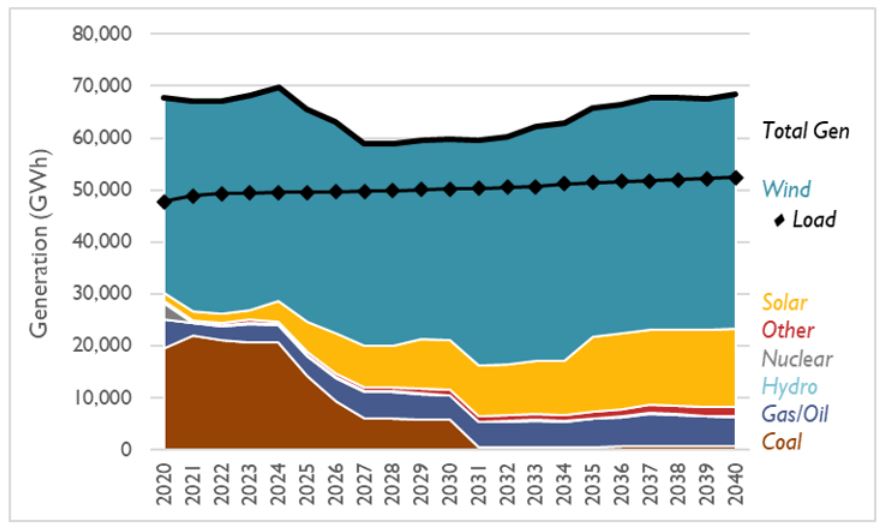How to save Iowans billions and reduce CO2 by 90%
posted
by Michael Schmidt on Tuesday, January 25, 2022
The Iowa Utilities Board has a stark question before it: should it put customers’ needs first and require MidAmerican to take action that can save customers as much as $5 billion dollars and reduce CO2 emissions by 90 percent?
IEC and our partners filed comments last month showing that MidAmerican needs to retire its coal plants to save money and reduce emissions. MidAmerican operates six coal plants, but has not announced any coal retirement dates and has no plans or goals for reducing its emissions. This makes MidAmerican an outlier even among the other Berkshire Hathaway Energy subsidiaries PacifiCorp and NV Energy. IEC, Environmental Law & Policy Center, and Sierra Club have provided evidence for years that these coal plants are expensive to operate. So expensive, in fact, that it would be cheaper to shut them down and build renewable generation instead. New analysis confirms this and puts a price tag on MidAmerican’s coal operations.
Our comments relied on a study we commissioned that evaluated MidAmerican’s coal fleet over the next 20 years. The study, performed independently by respected industry firm Synapse Energy Economics, Inc., evaluated electricity generation in the Midwest and MidAmerican’s generation in particular through 2040.
 The model evaluated whether it was cheaper to use renewable energy or to keep running the coal plant for each year. The modeling made sure that there would be enough generation to meet peak demand and ensure reliability. The conclusion was clear: MidAmerican needs to retire its coal plants. If two were retired in 2024, two in 2025, one in 2026, and one in 2030, Iowa customers would save $1.2 billion as much as $5 billion.
The model evaluated whether it was cheaper to use renewable energy or to keep running the coal plant for each year. The modeling made sure that there would be enough generation to meet peak demand and ensure reliability. The conclusion was clear: MidAmerican needs to retire its coal plants. If two were retired in 2024, two in 2025, one in 2026, and one in 2030, Iowa customers would save $1.2 billion as much as $5 billion.
Where do the savings come from? Mostly from not buying coal, and some from not having to pay the costs to maintain the coal plant itself.

If gas prices are higher than the mid-range forecast assumed above, the cost savings would increase to $5 billion. Avoiding the higher costs and price volatility by retiring the aging coal units and moving to 100% clean energy generation using wind and solar would be a huge cost benefit for MidAmerican customers.

If MidAmerican followed through and retired the plants on Synapse's recommended schedule, Iowa's generation mix would look more like this by 2030:

The other enormous benefit for Iowans is the reduction in emissions. MidAmerican already must address emissions as part of a two-year planning process required by the IUB. Electricity generation was the third-highest source of CO2 emissions in Iowa in 2019. Coal plants emit more CO2 than other forms of generating electricity, so retiring coal plants results in an enormous drop in emissions. Retiring the coal plants by 2030 will avoid 318 million tons of CO2 emissions and would help MidAmerican customers save money.
This reduction would make a big difference in Iowa's total CO2 emissions and will be necessary to avoid the worst of climate change. This is one reason why IEC has called for 100% clean energy by 2035. It also avoids other financial consequences impacting customers from burning coal that IEC laid out in its 2021 Condition of the State report.
The time to take action is now. The Iowa Utilities Board needs to ensure that MidAmerican is acting in the best interests of its customers, not actions intended to only benefit MidAmerican shareholders. Customers deserve and should expect nothing less.
This piece was co-authored by Michael Schmidt, IEC Staff Attorney, and Steve Guyer, IEC Energy and Climate Policy Specialist.
- carbon pollution
- clean energy
- climate change
- coal